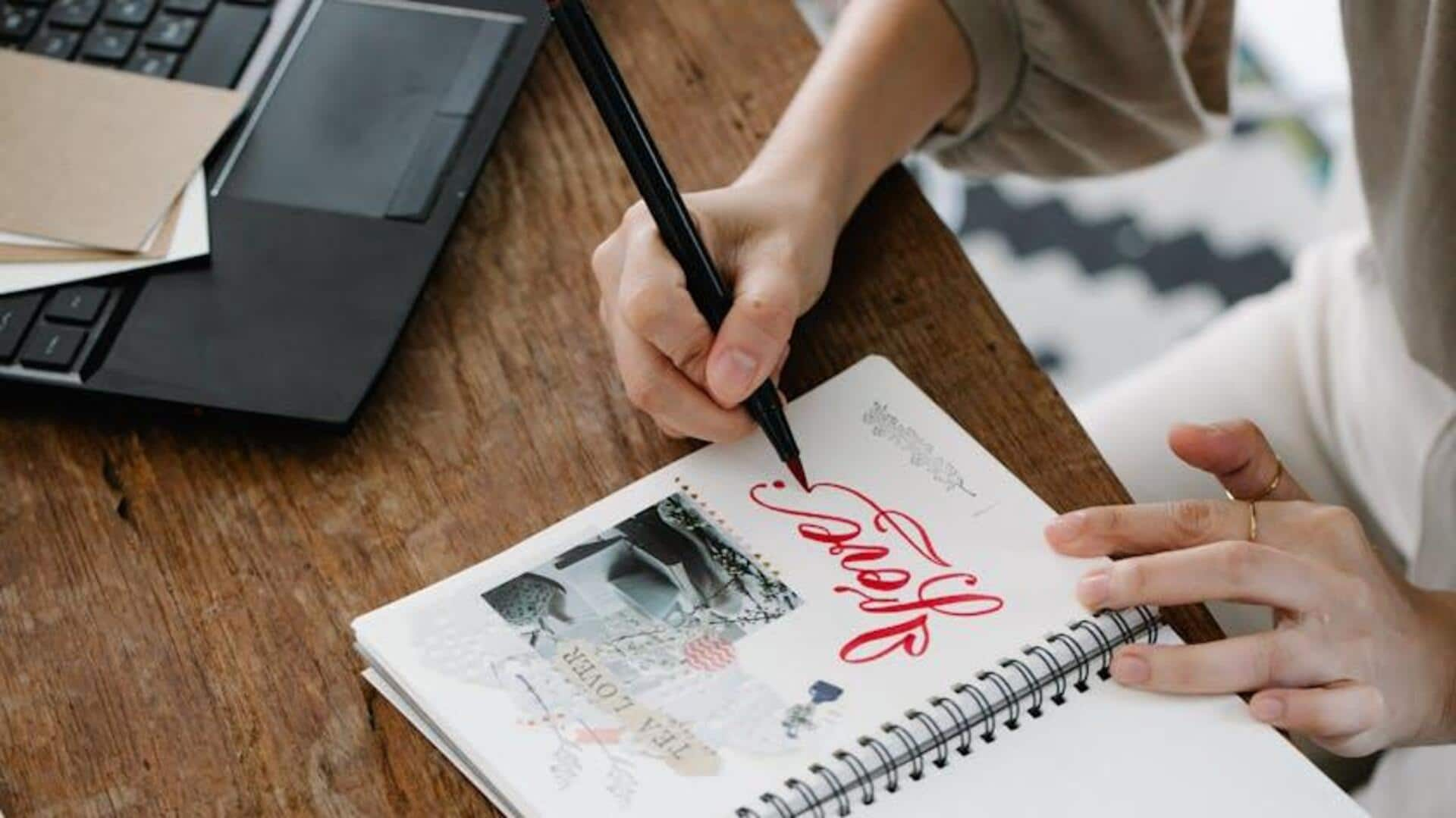
How to practice artistic journaling
What's the story
Artistic journaling is a powerful tool for self-reflection and creativity. It combines the elements of art with personal writing, allowing individuals to explore their thoughts and emotions in a unique way. This practice can help you gain insights into your own mind, enhance your creativity, and provide a therapeutic outlet for expressing yourself. Here are five ways to use artistic journaling for self-reflection.
Tip 1
Start with free drawing
Begin your artistic journaling journey by engaging in free drawing. Take a blank page and let your hand move freely, without any specific intention or subject in mind. This spontaneous act can help you tap into your subconscious thoughts and feelings. As you draw, observe any patterns or images that emerge, as they may hold meaningful insights about your current state of mind.
Tip 2
Use color symbolism
Incorporate color symbolism into your journal entries. Different colors evoke different emotions and meanings. By consciously choosing colors that resonate with how you feel at the moment, you can visually express emotions that may be difficult to articulate verbally. For example, using blue might represent calmness, while red could signify passion or anger.
Tip 3
Integrate quotes or affirmations
Enhance your artistic journal by adding quotes or affirmations that resonate with you. These words can serve as prompts for reflection and inspiration. Choose quotes that challenge or encourage you, and write them alongside your artwork. This practice not only enriches the visual aspect of your journal but also provides a framework for deeper introspection.
Tip 4
Experiment with mixed media
Explore mixed media techniques in your journal by combining different materials such as paint, collage, and photography. Mixing these elements allows for more dynamic expression and encourages experimentation without the fear of making mistakes. Each medium can bring out different aspects of your thoughts and emotions, offering new perspectives on what you're experiencing internally.
Tip 5
Reflect on past entries
Regularly revisit previous entries in your artistic journal to reflect on how much you've changed over time. Looking back at past drawings or writings can help you identify recurring themes or patterns in your life experiences. This reflection provides an opportunity to celebrate growth and recognize areas where further exploration may be beneficial.